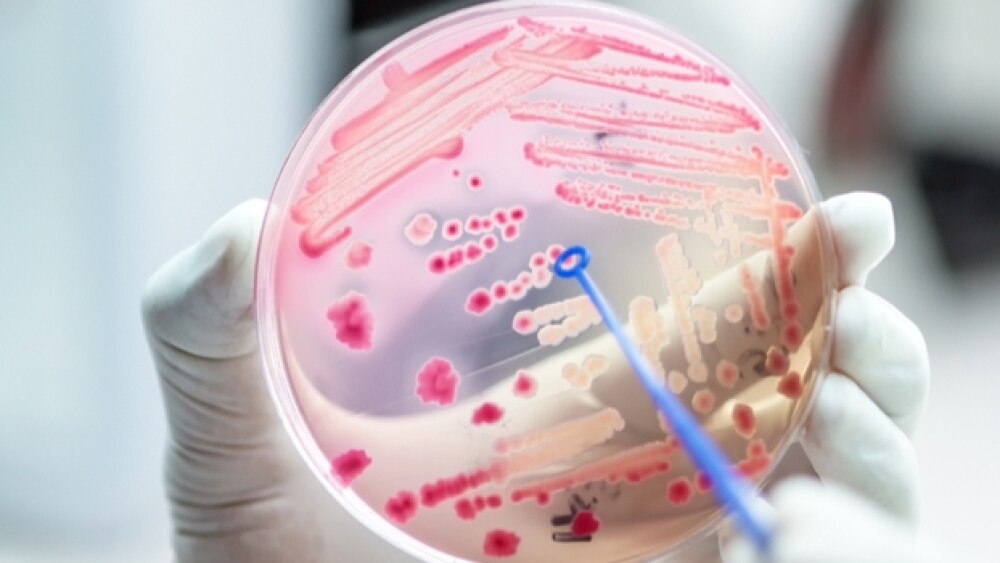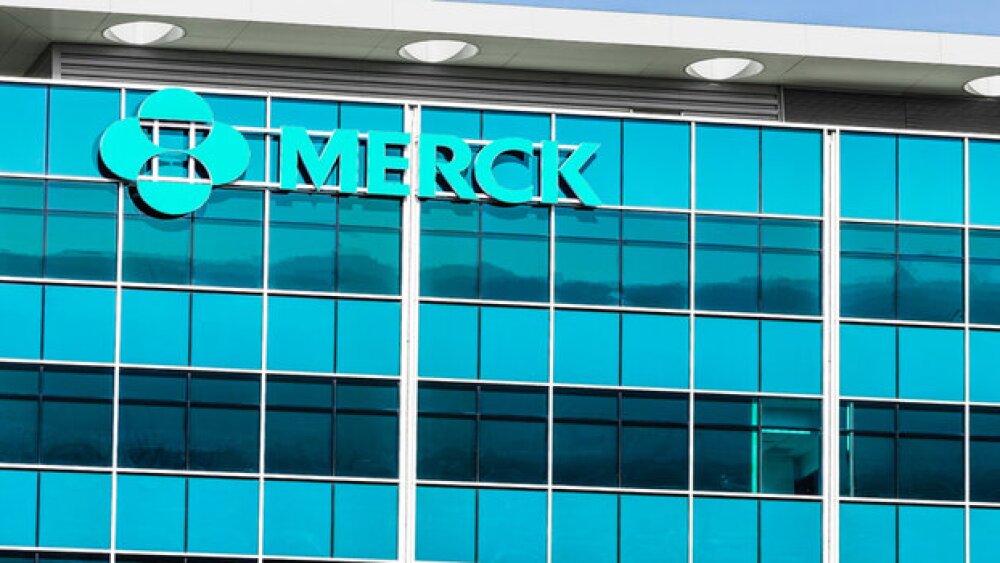According to the U.S. Centers for Disease Control and Prevention, about 2 million people each year are infected with antibiotic-resistant bacteria and 23,000 people die as a result. A recent study by the UK government estimated that by 2050, as many as 10 million people could die worldwide from antibiotic-resistant infections.
Antimicrobial resistance (AMR) is increasingly becoming a global problem. According to the U.S. Centers for Disease Control and Prevention (CDC), about 2 million people each year are infected with antibiotic-resistant bacteria and 23,000 people die as a result. A recent study by the UK government estimated that by 2050, as many as 10 million people could die worldwide from antibiotic-resistant infections.
“Working to Fight AMR” is an initiative by the Biotechnology Innovation Organization (BIO) to support efforts to increase development of new antibiotics to treat emerging AMR infections. Greg Frank, director of the campaign and director of Infectious Disease Policy at BIO, spoke with BioSpace about the campaign and its goals.
Noting that fighting bacterial infections has been a major underpinning of modern medicine, and that so many procedures in cancer, chemotherapy, organ transplants, complex surgery and Caesarian sections have been made possible through these innovations, Frank says, “we’ve lost a few steps in the fight against the rise of drug resistance. We are behind in terms of developing the pipeline of new medicines to stay ahead of resistance.”
Frank added, “the pipeline of products under development are not nearly enough to keep pace with antibiotic resistance right now. I think there are about 43 antibacterial products under development. In contrast, there are about 1,000 under development for cancer.”
Although it is generally known by the public that there is a rise of antibiotic-resistant bacteria, this aspect of the fight—that fewer companies are involved in antibiotic development and have difficulty staying in business—is less well known.
The prime example is Achaogen, which in 2018 received FDA approval for Zemdri (plazomicin), an antibiotic for multi-drug-resistant (MDR) Gram-negative infections, including for complicated urinary tract infections (cUTI) and pyelonephritis. The drug launched in July 2018. At about the same time, the company announced plans to eliminate 80 jobs, about 28% of its staff, to focus on the launch and two other research programs. In April of this year, Achaogen filed for Chapter 11 bankruptcy reorganization. In June it auctioned off most of its assets for $16 million, royalties and assumpt of certain contractual liabilities. The companies that acquired them were China companies Cipla USA and QiLu Antibiotics Pharmaceutical, and Heritage Global Partners.
In 2018, Novartis closed its infectious diseases drug research unit. Theravance Biopharma abandoned an experimental antibiotic and sold its FDA-approved antibiotic. In November 2018, antibiotics company Melinta Therapeutics cut its staff, stating at the time, “In the face of an extremely challenging time for the antibiotics industry, Melinta has made the difficult decision to significantly reduce our investment in discovery research and are currently looking for strategic partners to take on these activities, located at our New Haven Facility.”
And these are just a few examples. Big pharma has largely gotten out of the antibiotics business, with about 90% of research on new antibiotics being conducted by small biotech companies with market caps of less than $100 million, more than half pre-revenue.
It’s not the science. The science is there. It’s the market.
It takes about 10 to 15 years and at least $1 billion to develop a drug. As a result, biopharma companies need to be able to charge a high enough price to sell volumes of the drug to earn back R&D expenses, keep shareholders happy and be profitable. That works well for many of the common drugs, such as antidepressants and statins, and the newer cancer therapies like CAR-T and gene therapies like Lucentis have extremely high prices, but payers are generally willing to pay for them because of their effectiveness or they’re ability to treat previously untreatable illnesses.
Most antibiotics, on the other hand, are inexpensive. The ones with high prices are generally reserved for rare hospital use. And in the best-case scenarios, antibiotics aren’t used at all, and in most cases are only used for a short period of time. That makes it difficult for companies to turn a profit on antibiotics, despite an increasing critical need.
“Working to Fight AMR” has two broad programs it is focused on. One is the DISARM Act.
Government reimbursement programs and private insurers reimburse hospitals for antibiotics as a bundle rather than separately. The less a hospital pays for the components of the bundle, the more likely it is to cover its costs or be profitable.
The DISARM (Developing an Innovative Strategy for Antimicrobial Resistant Microorganisms) Act was introduced by Senators Johnny Isakson (R-GA) and Bob Casey (D-PA) in June 2019.
“Its objective,” Frank said, “is to really address some of the unique challenges regarding Medicare reimbursement. Bundled payments are designed around helping controlling costs. Unfortunately, one of the results is they’re designed around a typical patient. I would argue a person suffering from a drug-resistant infection is anything but a typical patient. They’re likely to be a very expensive patient to treat. This creates a disincentive for the hospital from using some newer, more expensive antimicrobials, otherwise they may lose money on treating that patient due to the bundle.”
The DISARM Act is attempting to separate payments for qualifying antimicrobials from the bundle. “The objective,” Frank said, “is basically taking cost out of the equation for treatment, of leaving it to the physician’s best judgement or the stewardship’s best judgement, with deciding what is the most appropriate treatments for that patient. We hope this will drive more appropriate use of newer antimicrobials for patients driven by clinical judgement and not cost.”
Everyone is also of aware of the possibility of the bill providing what Frank calls a “perverse incentive” or disincentive, to use the products when they really shouldn’t be. “So the DISARM Act has several robust measures to ensure appropriate stewardship is taking place,” Frank said.
One way to do that is that for hospitals to benefit from the DISARM-type of payment, they have to opt into the CDC’s National Healthcare Safety Network AMR Resistance Module, a heathcare-associated infection tracking system.
The second approach “Working to Fight AMR” is supporting are so-called “pull” incentives.
“DISARM may actually be quite helpful providing a signal that the U.S. government’s taking action,” Frank said. “They could help provide some stability to the market and buy time for many of the companies that are experiencing commercial distress, if you will. But that’s not going to necessarily create a robust, vibrant pipeline of the medicines that we need. So, the other side of the coin that we think is required are ‘pull’ incentives. At the crux of this is that if a product is FDA-approved that’s innovative and really meets critical public health needs, they could be given some sort of a reward that provides value, that provides a certain return investment that is decoupled from the volume of sales.”
“Working to Fight AMR” has pulled together a broad coalition of industry and non-industry representatives who are working to develop exactly what such a “pull” incentive would look like.
“It may be a concept of a market award where regular financial payments are given to a company over time that are tied to obligations for stewardship and access and things along those lines,” Frank said. “We do think we’re going to need this policy as well to create the sort of robust ecosystem. We’re hoping that this campaign can further drive awareness of the need for this ‘pull’ incentives and to facilitate discussion to develop the best vehicle for this.”
It’s possible that the “pull” incentives will be aligned similarly to the U.S. government activities that sprang into life after the 2001 anthrax attacks in the U.S. Several agencies either stepped in, such as the Department of Defense, or were created, such as the Department of Health & Human Service’s Biomedical Advanced Research and Development Authority (BARDA), to secure the U.S. from chemical, biological, radiological and nuclear (CBRN) threats, as well as pandemic influenza and emerging infectious diseases. Part of this was to fund research by biopharma companies into new treatments for some of these threats and manufacture them for the Strategic National Stockpile.
“Dual use would be possible approach for ‘pull’ incentives,” Frank said. “For example, in the context of a product like Achaogen’s that would be available if needed for a bioterrorism outbreak but would be sustained by its commercial applications in treating patients. I would argue that that particular model is not working anymore, so we hope we can engage with the U.S. government, with the administration and Congress to find solutions that may sort of slipstream in behind some of these other initiatives. But it’s a little too early to say for sure what that would really look like.”
Meanwhile, the clock is ticking as bacteria continue to develop resistance to antibiotics.





